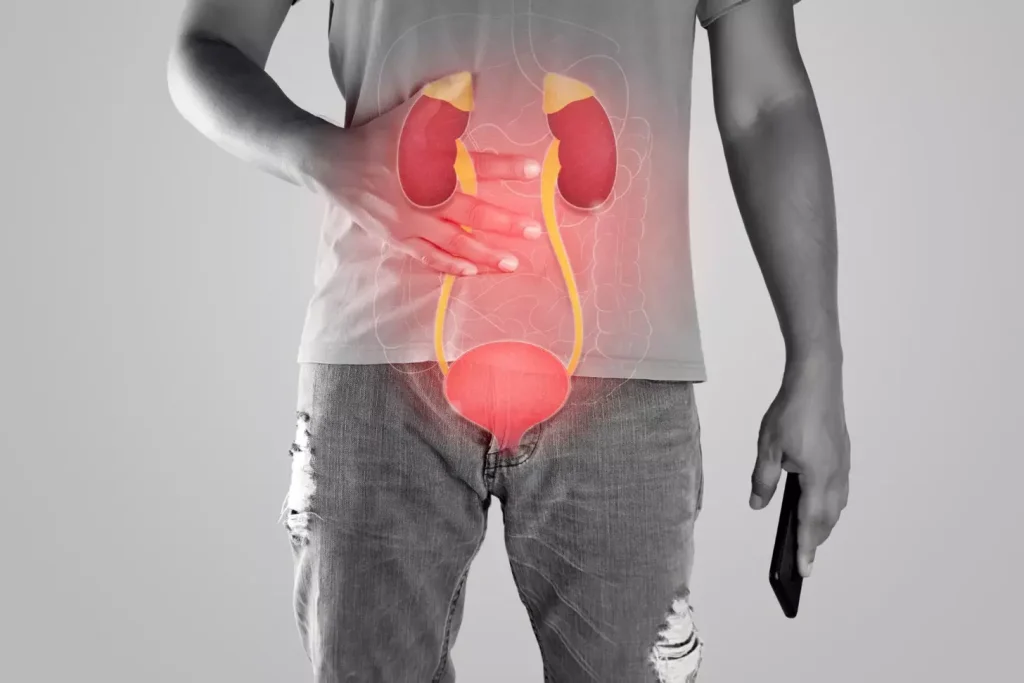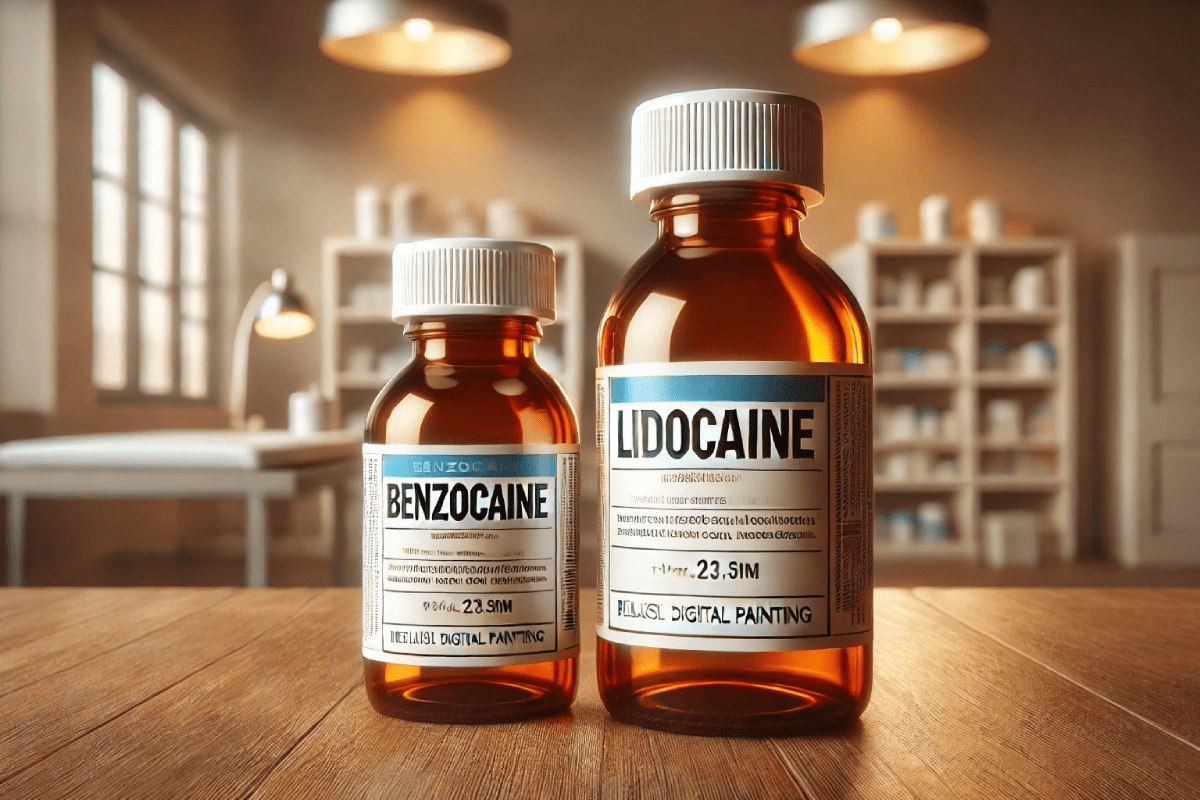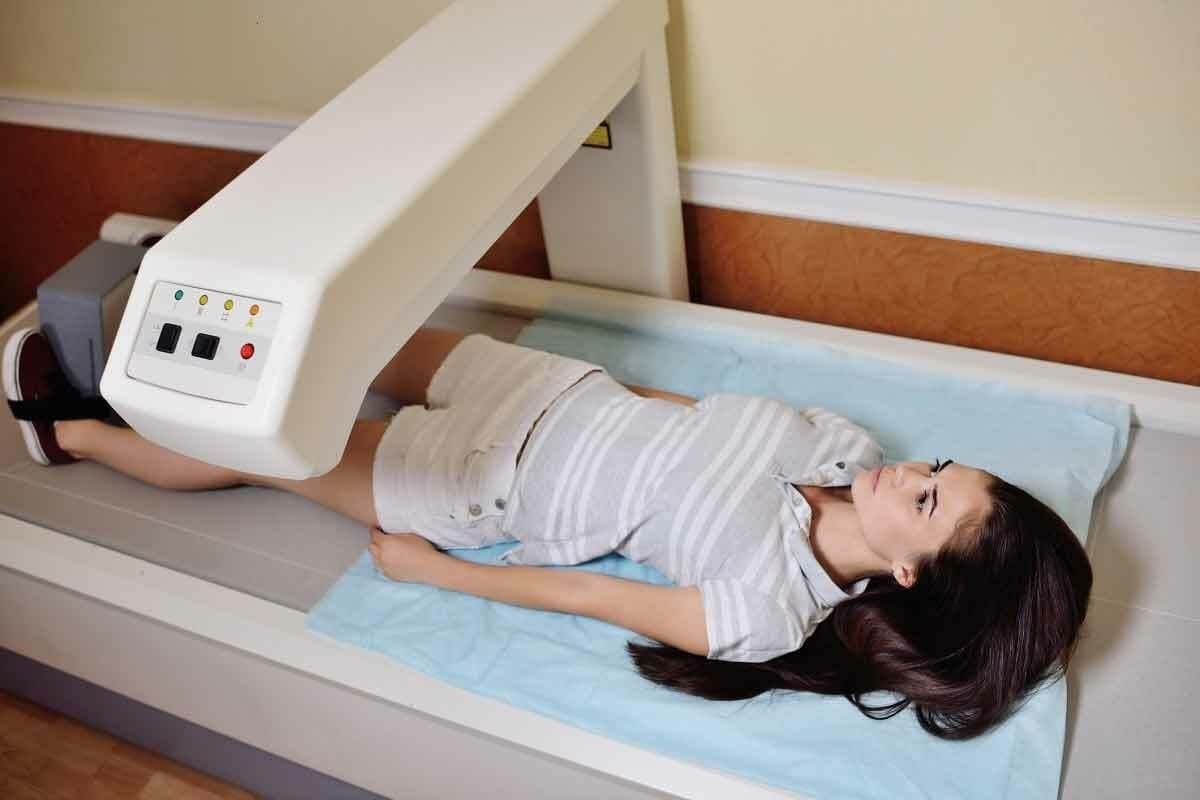Last Updated on November 26, 2025 by Bilal Hasdemir

Bladder cancer is a big health issue. Immunotherapy, like BCG, is key in fighting it. BCG is a vaccine made from Mycobacterium bovis. It’s used as a main intravesical therapy for early bladder cancer.
This therapy involves putting a liquid drug directly into the bladder. It’s done through a catheter. This method has shown to help control the disease well.
At Liv Hospital, we aim to give top-notch healthcare. We support patients from all over with our international patient support. Our team works hard to offer advanced, ethical, and focused care.
We make sure people with bladder cancer get the best treatment with BCG therapy.
Key Takeaways
- BCG is a well-established immunotherapy for bladder cancer.
- Intravesical BCG therapy is used to treat early-stage bladder cancer.
- The procedure involves administering BCG directly into the bladder.
- Liv Hospital is committed to providing advanced and patient-focused care.
- Understanding long-term side effects is key for managing the disease well.
Understanding BCG Medical Treatment for Bladder Cancer
The use of BCG in urology has become a cornerstone in treating non-muscle invasive bladder cancer.
Definition and Origin of Bacillus Calmette-Guérin
BCG is a weakened form of Mycobacterium bovis, which causes tuberculosis (TB). It was first made as a TB vaccine. Now, it’s used to treat bladder cancer by boosting the immune system.
From Tuberculosis Vaccine to Cancer Treatment
The journey of BCG from TB vaccine to cancer treatment is fascinating. In the 1970s, it was found to boost the immune system against cancer. This led to its use in treating bladder cancer, mainly non-muscle invasive types.
BCG is given directly into the bladder to fight cancer cells.
Current Role in Bladder Cancer Management
BCG treatment is now a standard for managing high-risk non-muscle invasive bladder cancer. It helps prevent cancer from coming back and getting worse. The treatment involves weekly instillations for six weeks, followed by maintenance therapy.
BCG’s success in bladder cancer management makes it a key tool in urology.
| Treatment Outcome | Description | Success Rate |
|---|---|---|
| Recurrence Prevention | Ability of BCG to prevent cancer recurrence | 60-70% |
| Progression Prevention | Effectiveness in preventing disease progression | 70-80% |
| Side Effects | Common side effects experienced by patients | Varied |
“The use of BCG as an immunotherapeutic agent represents a significant advancement in the treatment of cancer.”
In conclusion, BCG medical treatment has a rich history and a key role in managing bladder cancer. Its evolution from a TB vaccine to a cancer treatment shows the power of medical innovation.
How BCG Works as an Immunotherapy
BCG therapy activates the immune system to fight bladder cancer cells. It’s a key treatment for non-muscle invasive bladder cancer.
Immune System Activation Mechanisms
BCG is put into the bladder, starting a strong immune reaction. The bacteria in BCG make immune cells like dendritic cells and T-cells attack cancer cells. This immune activation is key to getting rid of bladder cancer cells.
The process involves cytokines and chemokines, signaling molecules that help the immune system work together. This complex interaction leads to a strong anti-tumor response.
Targeted Action Against Bladder Cancer Cells
BCG immunotherapy targets cancer cells directly. By putting BCG into the bladder, it focuses on the bladder lining where cancer cells live. This focused approach reduces side effects.
BCG not only kills cancer cells but also stops new tumors from forming. The immune system stays ready to fight cancer even after treatment ends.
BCG immunotherapy is a big step forward in treating bladder cancer. It offers a targeted and effective way to manage the disease.
BCG Treatment Candidates: Non-Muscle Invasive Bladder Cancer
Patients with non-muscle invasive bladder cancer can greatly benefit from BCG treatment, mainly for high-risk cases. Getting a bladder cancer diagnosis can be scary. It’s important to look into all treatment options.
BCG treatment is for early-stage bladder cancer, mainly for those with high-risk non-muscle-invasive bladder cancer (NMIBC). This treatment uses the body’s immune system to fight cancer. It’s effective in treating and preventing cancer from coming back.
High-Risk Bladder Tumors and BCG Eligibility
To see if BCG treatment is right, we look at the tumor’s risk. Tumors with large size, high-grade cells, or many tumors are high-risk. These are often eligible for BCG treatment.
BCG treatment is chosen based on each patient’s health and tumor details. Our team works with patients to find the best treatment plan.
Risk Assessment and Treatment Decision-Making
Assessing risk is key in choosing the right treatment for bladder cancer. We use tests and evaluations to understand the tumor’s risk. This helps us decide if BCG treatment is best.
The table below shows the factors we consider when deciding on BCG treatment:
| Risk Factor | Description | Impact on BCG Eligibility |
|---|---|---|
| Tumor Size | Large tumors are considered high-risk | Increases eligibility for BCG treatment |
| Tumor Grade | High-grade tumors are more aggressive | High-grade tumors are typically eligible for BCG |
| Number of Tumors | Multiple tumors indicate higher risk | Multiple tumors may increase BCG eligibility |
| Patient’s Overall Health | Presence of other medical conditions | May affect BCG eligibility based on individual health status |
We carefully look at these factors to decide if BCG treatment is best for non-muscle invasive bladder cancer. Our goal is to give personalized care that meets each patient’s needs.
The BCG Procedure: Step-by-Step Process
BCG treatment for bladder cancer is a detailed process. It starts after a patient has had a Transurethral Resection of Bladder Tumor (TURBT) surgery.
Preparation Following TURBT Surgery
After TURBT surgery, the bladder needs time to heal before BCG treatment. This healing time can range from a few days to weeks. It depends on how quickly the patient recovers and the surgeon’s advice.
During this time, patients should:
- Avoid strenuous activities
- Follow their healthcare provider’s advice on medication and appointments
- Tell their healthcare provider right away if they notice any infection signs
The Intravesical Instillation Technique
The BCG treatment involves putting the BCG solution directly into the bladder. This is done through a catheter, called intravesical instillation. The procedure happens in a healthcare provider’s office or clinic.
Here’s how the intravesical instillation works:
- A catheter is put into the bladder through the urethra.
- The BCG solution is then put into the bladder.
- The catheter is taken out, and the patient keeps the solution in for about two hours.
- During this time, patients may change positions to make sure the BCG solution covers the whole bladder.
Post-Installation Care and Precautions
After the BCG instillation, patients get advice on how to care for themselves. This is to reduce side effects and make sure the treatment works well.
Important post-installation care and precautions include:
| Care Measure | Description |
|---|---|
| Fluid Intake | Drink lots of fluids to help clear the bladder |
| Hygiene | Men should sit down to urinate for 6 hours after treatment to avoid splashing |
| Precautions | Avoid sexual contact for 48 hours after treatment |
By following these steps and guidelines, patients can get the most out of BCG treatment. They can also reduce side effects.
BCG Treatment Protocols and Schedules
The BCG treatment for bladder cancer has several steps. It starts with an initial phase and then moves to maintenance therapy. This ensures the treatment works well over time.
Induction Phase: Weekly Treatments for Six Weeks
The first part of BCG treatment is the induction phase. It involves weekly BCG instillations in the bladder for six weeks. This phase is key in getting the immune system to attack bladder cancer cells.
- Frequency: Weekly instillations
- Duration: Six weeks
- Purpose: To start an immune response against bladder cancer cells
Maintenance Therapy: Optimizing Long-Term Outcomes
After the induction phase, maintenance therapy keeps the immune response going. It helps prevent cancer from coming back. The schedule for this therapy can change but usually includes:
- Instillations at 3, 6, 12, 18, 24, 30, and 36 months after the initial phase
- Regular cystoscopies to check for cancer return
Maintenance therapy is key for long-term success and lowering cancer risk.
Following BCG treatment protocols and schedules helps doctors improve patient results and life quality.
BCG vs. Chemotherapy for Bladder Cancer
It’s important to know the differences between BCG therapy and chemotherapy for bladder cancer. Both are used to treat bladder cancer but in different ways. They are best for different situations.
Different Mechanisms: Immune Stimulation vs. Cytotoxic Effects
BCG is an immunotherapy that stimulates the immune system to fight bladder cancer cells. It helps the body’s immune system attack cancer cells. Chemotherapy, on the other hand, uses cytotoxic drugs to kill cancer cells directly. But, it can also harm healthy cells, causing more side effects.
BCG works by activating immune cells like macrophages and T cells to target bladder cancer cells. This action is mainly focused on the bladder. Chemotherapy, by contrast, affects the whole body, killing both cancer cells and some healthy cells.
Clinical Scenarios for Each Treatment Approach
Choosing between BCG and chemotherapy depends on several factors. These include the cancer’s stage and grade, and the patient’s health. BCG is often used for non-muscle invasive bladder cancer, like high-risk tumors. It’s given directly into the bladder, reducing side effects.
Chemotherapy is used for both non-muscle invasive and muscle-invasive bladder cancer. For non-muscle invasive, chemotherapy is considered when BCG isn’t suitable. For muscle-invasive, it’s often used with surgery or radiation.
We look at each patient’s cancer details to decide between BCG and chemotherapy. Things like tumor size, grade, and presence of carcinoma in situ matter. By understanding how BCG and chemotherapy work, we can tailor treatments for better outcomes.
Common Side Effects During BCG Treatment
The BCG treatment is usually well-tolerated but can cause side effects. It’s important to know about these effects and how they affect patients.
Urinary Symptoms and Bladder Irritation
Urinary symptoms like frequency, urgency, and pain are common side effects. These symptoms come from bladder irritation caused by BCG.
Drinking plenty of fluids helps flush out the bladder. Sometimes, medication is needed to ease discomfort.
Systemic Reactions and Flu-Like Symptoms
Some patients also get flu-like symptoms like fever, fatigue, and malaise. These symptoms are usually mild and short-lived but can be uncomfortable.
“BCG therapy can cause flu-like symptoms in some patients, which typically resolve on their own within a few days.”
When to Contact Your Healthcare Provider
While most side effects are manageable, some need medical attention. If symptoms don’t get better, get worse, or include severe pain or trouble urinating, seek help.
| Symptom | Action |
|---|---|
| Mild urinary symptoms | Manage with fluids and rest |
| Severe urinary symptoms or pain | Contact healthcare provider |
| Flu-like symptoms | Monitor and rest; seek medical help if severe |
It’s key for patients to talk openly with their healthcare team about any side effects during BCG treatment.
Long-Term Side Effects of BCG Treatment for Bladder Cancer
BCG therapy for bladder cancer can have long-term side effects. While it’s usually well-tolerated, some may face chronic urinary issues or rare serious problems.
Chronic Urinary and Bladder Changes
Some may deal with long-term urinary symptoms after BCG treatment. These can include more frequent, urgent, or painful urination. Medication and lifestyle changes can help manage these symptoms.
BCG treatment can also lead to chronic bladder inflammation. This can cause scarring and reduce bladder capacity. We help patients monitor these changes and find ways to lessen their impact on daily life.
Rare but Serious Complications
Though rare, BCG sepsis is a serious condition that can be life-threatening. It happens when BCG bacteria spread beyond the bladder. Symptoms include high fever, chills, and severe fatigue. If these symptoms appear, seek medical help right away.
Other rare complications include BCG infections in other parts of the body, like the kidneys or prostate. We teach our patients to recognize signs and symptoms and when to get immediate care.
Monitoring and Managing Long-Term Effects
Regular check-ups are key for tracking BCG treatment’s long-term effects. We use imaging tests like ultrasound or CT scans and symptom assessments to monitor bladder and urinary system changes.
By keeping a close eye on patients and addressing issues quickly, we can reduce the risk of long-term complications. This helps ensure the best treatment outcomes.
BCG in Urology Practice: Efficacy and Outcomes
In urology, BCG treatment is key in fighting bladder cancer. It shows great promise in treating non-muscle invasive bladder cancer. This focus on better patient care is a big step forward.
Success Rates in Preventing Recurrence and Progression
BCG therapy has been well-studied, showing it works well in stopping bladder cancer from coming back. It also helps prevent the cancer from getting worse. This means better lives for those affected.
The success of BCG treatment depends on several things. These include the cancer’s stage and grade, and how well the patient responds. High-risk cases see a big drop in recurrence rates thanks to BCG.
| Treatment Outcome | BCG Treatment Success Rate |
|---|---|
| Recurrence Prevention | 60-70% |
| Progression Prevention | 50-60% |
Factors Affecting Treatment Response
Many things can affect how well a patient responds to BCG. These include health conditions, cancer stage and grade, and how the treatment is tolerated. A tailored approach to BCG can greatly improve its success.
The quality of the BCG vaccine and how it’s given also matter. It’s important that BCG is given by skilled healthcare professionals for the best results.
Understanding what affects BCG treatment and monitoring patient results helps us make it better. Our aim is to give the best care for bladder cancer patients. BCG is a key part of their treatment.
Alternative Treatments When BCG Is Not Effective
If BCG therapy doesn’t work, doctors look at other treatments. Dealing with bladder cancer can be tough, but there are options. These include other therapies or surgery.
Other Intravesical Therapy Options
When BCG fails, other treatments can help. These include:
- Intravesical chemotherapy: Putting chemotherapy directly into the bladder.
- Gemcitabine: A drug used as an alternative or with other treatments.
- Mitomycin C: A chemotherapy drug used in the bladder.
- Electromotive drug administration (EMDA): A method to better deliver drugs into the bladder wall.
These treatments aim to target cancer cells in the bladder. They try to avoid side effects from the whole body.
Surgical Approaches for BCG-Unresponsive Disease
For BCG-unresponsive disease, surgery might be needed. We consider:
- Radical cystectomy: Removing the bladder, often for high-risk or muscle-invasive cancer.
- Urinary diversion: Creating a new way for urine to leave the body after bladder removal.
- Neobladder reconstruction: Making a new bladder from intestine.
Surgery is a big decision. It’s considered when other treatments fail or aren’t right.
Emerging Treatments and Clinical Trials
Bladder cancer treatment is always changing. New treatments are being studied in trials. These include:
- Checkpoint inhibitors: Immunotherapies that boost the immune system against cancer.
- Targeted therapies: Treatments that target specific cancer mutations or pathways.
- Gene therapies: New ways to modify or replace genes to fight cancer.
Joining clinical trials can offer access to new treatments. It also helps advance bladder cancer care.
In conclusion, while BCG is key for non-muscle invasive bladder cancer, other treatments exist when it fails. We help patients choose the best next steps. This can include other therapies, surgery, or clinical trials.
Conclusion: The Evolving Role of BCG in Bladder Cancer Care
BCG treatment is key for bladder cancer, mainly for non-muscle invasive types. It helps lower the chance of cancer coming back and makes patients’ lives better.
BCG’s role in treating bladder cancer is growing. It’s used more in high-risk cases and might help with muscle-invasive types too. We’re working to tailor BCG treatments for each patient. This way, we can make treatments more effective and reduce side effects. BCG has a long history in cancer treatment and is getting even better.
What is BCG treatment for bladder cancer?
BCG (Bacillus Calmette-Guérin) treatment is a way to fight non-muscle invasive bladder cancer. It uses a weakened tuberculosis bacteria in the bladder. This helps the immune system attack cancer cells.
How does BCG work as an immunotherapy?
BCG boosts the immune system to find and destroy bladder cancer cells. It helps the body fight cancer and prevent it from coming back.
What are the common side effects of BCG treatment?
Side effects include frequent urination, urgency, and bladder discomfort. These symptoms are usually short-lived and can be managed.
What are the long-term side effects of BCG treatment?
Long-term effects might include ongoing bladder irritation or scarring. Rare but serious complications can also happen, so ongoing monitoring is key.
Who is a candidate for BCG treatment?
BCG is for people with non-muscle invasive bladder cancer, mainly those with high-risk tumors. The choice depends on a detailed risk assessment.
How is BCG administered?
BCG is given through a catheter into the bladder. This is done on an outpatient basis.
What is the BCG treatment protocol?
The treatment starts with weekly sessions for six weeks. Then, maintenance therapy follows to improve long-term results.
How does BCG compare to chemotherapy for bladder cancer?
BCG and chemotherapy work differently. BCG boosts the immune system, while chemotherapy directly kills cancer cells. The right choice depends on the situation.
What are the alternatives if BCG is not effective?
If BCG doesn’t work, other treatments include intravesical therapies, surgery, or new treatments in trials.
What is the success rate of BCG treatment?
BCG is effective in stopping bladder cancer from coming back. Success rates vary based on tumor risk and how well the patient responds.
Are there any emerging treatments for bladder cancer?
Yes, new treatments and trials are exploring immunotherapies and targeted therapies for bladder cancer.








